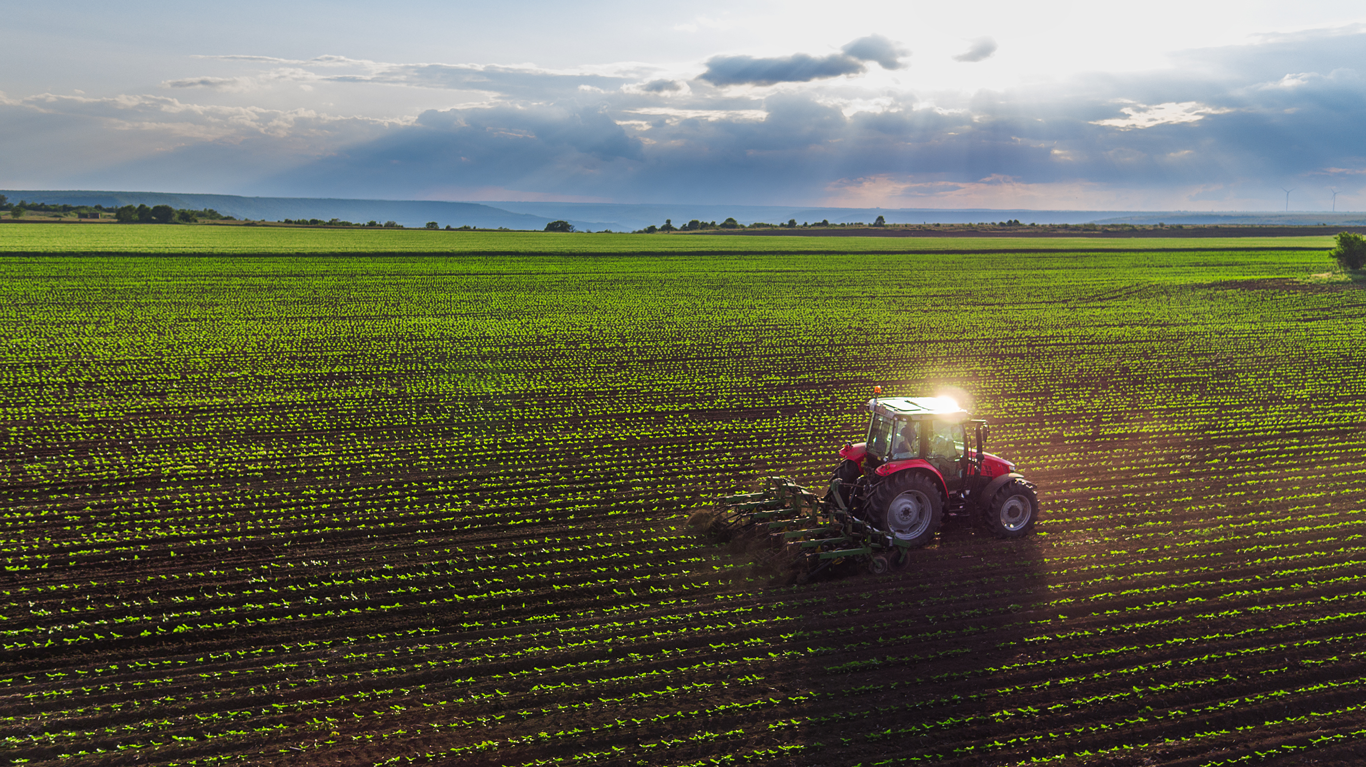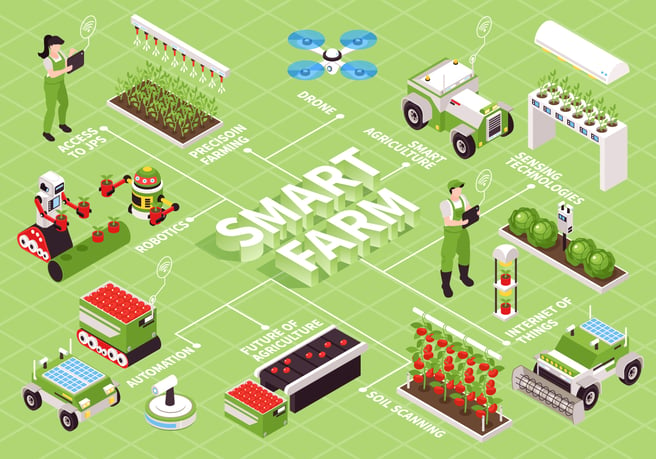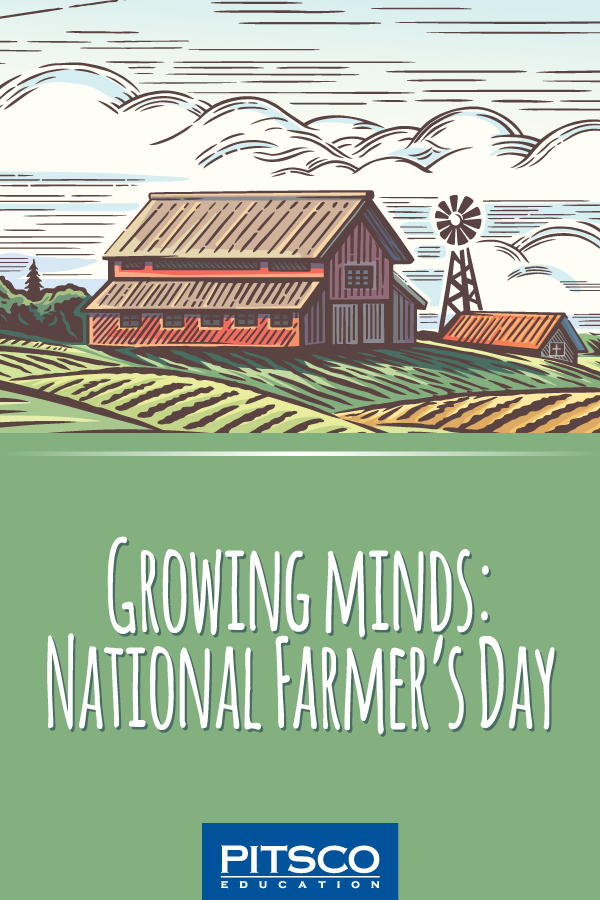Tacos 🌮
Gasoline ⛽️
Sweaters 🧥
Pharmaceuticals 💊
All of these come from our farmers.
From fiber to fuel to food, nearly everything we eat, wear, and use started as a plant or an animal that was raised on a farm. Yes, even our favorite fast-food meals!
October 12 is National Farmer’s Day, a day to celebrate and praise those hardworking farmers all across the nation. Farming is not just a job where people have animals and grow food, it also requires knowledge, experience, and hard work. There are two million farms scattered all across the US, but farmers and ranchers today make up only 1.3 percent of the labor force – compared to 1840 when 70 percent of the population was farming (“9 Mind-Blowing Facts about the US Farming Industry”).
Farm fact: The average US farmer feeds 155 people.
We rely a whole lot on our few farmers!
Dig Into STEM
When we talk STEM careers, you might think of jobs such as mechanical engineer, computer programmer, or biologist. But, did you ever think that farming is associated with STEM?
Farmers wear lots of hats within science, technology, engineering, and math. Whether it’s the science to help plants flourish, the engineering of programming new technology to increase efficiency, or using mathematical concepts to determine the amount of seeds needed to plant crops, farmers use all areas of STEM to do their job. Let’s dig into each of them!
For farmers to understand and keep their land, animals, and plants healthy, they have to incorporate science.
Did you know that farmers can’t replant the same thing on the same piece of land every year? They have learned from research that the best way for crops to succeed is by rotating their crops and using the right fertilizer to improve the environment. As for those farmers who irrigate their crops, they have to use science to test the irrigation water for various bacteria that could potentially hurt their plants. Farmers also use science for environmental sustainability. Similar to keeping the soil healthy, farmers use their knowledge to improve and maintain their land. If they didn’t take care of their environment, they wouldn’t have anywhere to raise their cattle.

These are just a few examples of science in farming, but here are some more areas that these workers research and incorporate on a day-to-day basis:
- Irrigation management
- Development of pesticides
- Sustainability
- Horticulture
- Entomology
Farming looks a lot different today than it did a few decades ago, thanks to technology. Some of the improvements in technology include sensors, devices, machines, and information technology. Before these advances, farmers relied on their own strength, using plows and animals such as oxen, horses, and mules. By the 1920s, tractors were introduced and farmers could work faster and produce greater yields.
Today, some farmers use sophisticated technologies such as robots, temperature and moisture sensors, aerial images, and GPS technology. These advancements in farming help farmers efficiently produce more with less manpower – larger yields with less inputs.

Some more benefits associated with the increase of tech in farming are:
- Decreased use of water, fertilizer, and pesticide.
- Reduced impact on natural ecosystems.
- Less runoff of chemicals into rivers and groundwater.
- Increased worker safety.
- Safer growing conditions and safer foods.
- Reduced environmental and ecological impact.
Another big advancement in the farming industry is the method of genetic engineering, or genetically modified organisms (GMOs). This is the process of manipulating an organism’s genes using biotechnology. Engineers have been developing various GMOs to create hybrids with higher yields, shorter life cycles, and greater pest and disease resistance. While GMOs can be a sticky subject, some things are for sure – GMOs help boost agriculture production and are changing the way farmers feed and clothe the world.
Engineering can also be found in other parts of farming such as designing and programming farming equipment, creating better solutions for efficiency, and even reducing pollution and other environmental issues.

Running and operating a farm requires the use of math each and every day! Farmers need to determine the amount of seed to purchase for the amount of acres they will plant. They use various math concepts such as measurements to determine a size of a field, weights and grades of seed, and mathematical systems of equations and inequalities to make decisions on where to plant which crops. Farmers also use math to determine their crop yield per acre or how much milk their cows produce.
Math has also been used to help farmers farm better. With the use of math and technology, farms can find ways to produce more with less through precision agriculture. Precision agriculture involves collecting more data than before and using models to lower any deficiencies in the production process. The result can increase efficiency, make farming more sustainable, as well as increase food availability.
So, now do you think farming is a STEM career?
It All STEMs from the Classroom
With fewer people becoming farmers or getting an agriculture degree, we should be doing more to encourage the next generation of farmers. And, as the world population increases, producing enough food will be one of the biggest challenges. Let students explore career pathways in agriculture because it’s never too early to start growing interest!

Bring the farm wherever you are! Explore Pitsco’s STREAM Missions for Grades 3-5 with curriculum titles such as Life Cycles and Plants. For Grades 6-9, check out curriculum titles such as Bio Research, Beyond Earth, Growing Up, and Looks Like Rain! Grow Next Gen and John Deere also share classroom resources to bring science and agriculture to life with real-world activities, lessons, and videos!
Check out some of these fun STEM farm activities to get you planted:
- Pulling Tractor – Build a tractor and test to see how much it can pull!
- You Are the Farmer – Create your own farm and learn the importance of math in agriculture!
- Soil Sample – Learn how to take and test a soil sample.
- Equipment Engineer – Test your knowledge of heavy machinery and learn what the equipment does!
- The Steaks Are High – Learn the importance of caring for animals and the environment while beefing up your math skills.
- Ag-Bites – Bring agriculture to your classroom with bite-size, hands-on activities!
Want to get more in the action? Take a virtual field trip to see and learn about the different kinds of farms all over the world! We’ve herded a few of our favorites for you to visit:
Next time you sing “Old MacDonald Had A Farm,” now you can think of all the STEM that went into Old MacDonald’s farm! Let us know if you have any experience with STEM in farming or other fun hands-on farm activities! Don’t forget to #ThankAFarmer today!
References
Agriculture Technology
Farming Better
5 Farming Technologies That Changed the World
The Science of Farming
What Is Precision Agriculture?

TOPICS: IN THE CLASSROOM, BEYOND THE CLASSROOM, Culture, Science, Technology, STEM, Engineering, Careers, Activities, Hands-on Learning, Math



